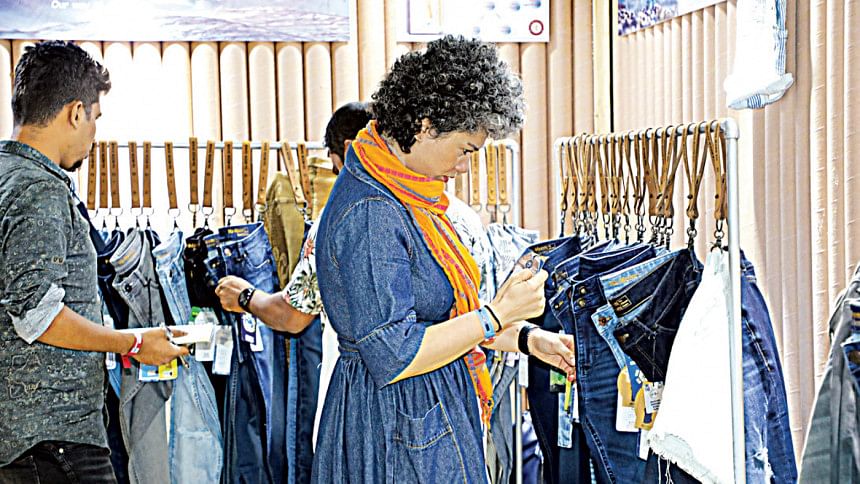Innovation key for Bangladesh to remain a global RMG leader

As we head into 2023, there is a sense of trepidation in the business landscape. As 2022 drew to a close, it felt at times like many companies were limping towards the end of the year. Executives I know were glad of the break and keen to recharge their batteries after a sobering few months as autumn turned to winter.
Orders from global fashion brands were down markedly towards the end of the year, as retailers struggled to manage inventory levels. The global pandemic has scarred our industry in many ways, and the issues it created in terms of supply chain volatility have yet to fully play out.
Against this backdrop, the question I want to consider at the start of this year is, can Bangladesh maintain its dominance in the global ready-made garment (RMG) supply chain? The short answer to this question is, yes, I truly believe that it can. But obviously there are plenty of caveats to such a statement and there are many things which we need to get right in order to capitalise on our current position. We also must consider that many economists are forecasting a recession for 2023, the extent of which there is no real consensus on.
In this article I will outline how I believe Bangladesh can maintain and improve on its current position as a garment production powerhouse. Before that, I will look briefly at some of the short-term dynamics which I believe will shape our fortunes in the coming months.
I believe it is impossible to write such an article without first of all considering the current situation in China. Consider first that China is the world's largest exporter of garments and textiles, followed by Bangladesh, and Vietnam. Our own industry is competing with Vietnam to win business and potentially inward investment from China, and this process will continue in the coming years.
What is notable about China is that the country has recently lifted its draconian "zero-covid" restrictions. The results are proving to be disastrous, and this could have a knock-on effect on Bangladesh's RMG sector for reasons I will explain. There are reports that Covid is now sweeping through China like wildfire. Hospitals, morgues, and crematoriums are said to be overflowing and the country is in serious crisis. Many countries are now making it compulsory for people from China to have a negative Covid test result in order to enter.
This issue is clearly going to have an impact on business, including China's huge textile industry. I quote here from the Financial Times (UK): "The coronavirus sweeping across China is causing widespread business disruption as staffing shortages threaten to close down factory production lines and truck drivers fall ill, bringing chaos to supply chains."
With this in mind, I expect many fashion brands to be watching this situation closely. China's crisis may well give them pause for thought and encourage them to further shift orders out of the country to supply hubs where the pandemic is no longer an issue. Bangladesh could benefit if executives exercise further caution over China.

This is the short-term context. However, to benefit from China's setback while growing more broadly, there are other things Bangladesh must get right.
The first of these is the onward shift towards vertical integration of its industry. If our industry is to maintain leadership status, it needs to be progressive and this means bringing more processes under one roof. Obvious benefits of vertical integration for Bangladesh's RMG industry include greater resilience to supply chain disruptions, market power, and economies of scale. The latter of these will enable Bangladesh apparel makers to gain a greater margin on products and become more profitable.
The second area I feel we need to improve in order to maintain leadership status is in the shift to higher added value products. We have all heard talk of how Bangladesh apparel makers are always price takers. Over-capacity is a well acknowledged problem in our industry, with too many factories producing the same, low value staple items. An excess of supply in this area maintains downward pressure on prices and reduces our bargaining power as manufacturers. There is a lot of talk about purchasing practices in our industry and how these can be improved. But the fundamental reason why purchasing practices are an issue is because of market dynamics and excess supply.
I would like to see this picture change and Bangladesh's supply chain to become more diversified in the short-medium term. To do this, we need to see a shift towards the production of products from man-made fibres such as polyester and viscose. We also need to see greater use of niche fibres such as wool, cashmere, and other fibres often associated with the luxury fashion sector.
This shift in emphasis will require investment in our supply chain and industrial upgrading, a process which we are already seeing at some of the larger, cash-rich garment makers. I believe the issue of added value goes hand-in-hand with vertical integration. Larger, vertically integrated textile factories with true economies of scale have much greater bargaining power and can work alongside clients as equals, rather than competing on price, price, price.
Another obvious way to add value is via sustainable production. All fashion brands these days are asking more and more of their suppliers in terms of their use of renewable energy, what they are doing to save water in apparel production, how clothing is being made, dyeing and finishing, and other areas. We can generate added value by becoming a world leader in all of these areas, and helping global fashion brands to achieve their sustainability goals.
There are two more areas where I believe investment is crucial to maintain industry leadership status. The first is placing greater emphasis on skills and training across the board. Particularly, I would like to see more investment in senior management learning and development. We need the brightest talent available to ensure our industry continues to be progressive and innovate and provide a vision and strategy.
Our rivals such as China place huge emphasis on management development and they do this by providing world class training and development. Interestingly, I saw a statistic recently which showed that China has nine out of the top 10 engineering universities in the world. This offers an illustration as to how developed countries use education and learning in order to get ahead in business and elevate their industries to the next level.
The final point on competitiveness relates to logistics. It has been a positive to see shipping lines introduced to European countries such as Italy in the past couple of years and we need more of the same in this area. Customers are wanting orders faster than ever, and Bangladesh must be ready to respond to this.
I do hear talks of near-shoring in countries such as the USA, with many people claiming that the country should reignite its once-proud textile industry. However, this talk has been around for as long as I have been in this industry and, so far, it has remained just that: talk. The reasons are a lack of industry infrastructure, and the high costs of doing business in the USA, which means it simply cannot produce clothing at a rate which is competitive with Bangladesh.
That said, we must not rest on our laurels and be awake to the fact that near-shoring is a potential threat in a world where everybody wants things straight away. We can counter this by continuing to invest in logistics, while building world class factories to produce clothing using state of the art techniques, and delivering orders in record time.
Overall, I am optimistic Bangladesh can maintain its global leadership status, but we will need some notable innovations in our industry to remain competitive in a rapidly evolving business landscape.

 For all latest news, follow The Daily Star's Google News channel.
For all latest news, follow The Daily Star's Google News channel. 



Comments